#shangri-las
Text
youtube
The Shangri-Las - The Leader of the Pack
13 notes
·
View notes
Text
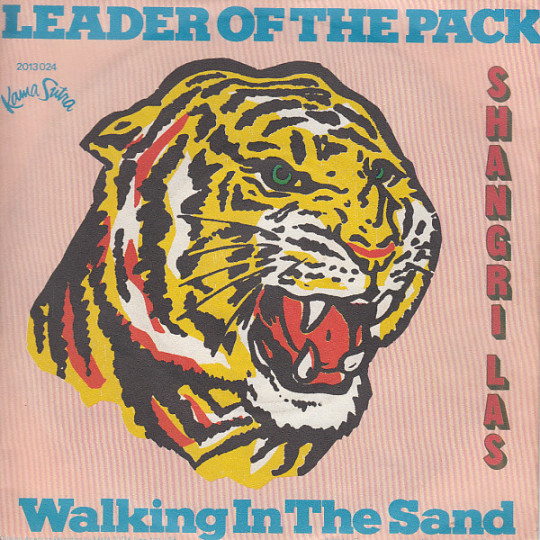
#Shangri-Las#tigers#whoa nice kitty?#pop#red#pink#black#white#blue#yellow#omega#our lady omega#Sagat
8 notes
·
View notes
Text

Mary Weiss, me; outside Magnetic Field, Brooklyn, 2008 (photographer unknown)
Mary Weiss, R.I.P.
It was 2005, and I'd lived in NYC for less than a year. I somehow finagled my way into a listening party for the incredible new Rhino Records box set, One Kiss Can Lead to Another: Girl Group Sounds Lost & Found. It was at some small event space in midtown, I don't remember what it was called. Cool joint though...
I felt a bit overwhelmed in this packed room of esteemed scenesters, aging industry big wigs, and the incredible original performers from the box set they were able to round up and sing a few songs.
Luckily the ever-fun couple of Miriam Linna and Billy Miller (Norton Records) were there, scanning the room with eyes as wide as anyone's, and the two introduced me to a few heps, like Richard Gottehrer -- the amazing producer/songwriter who sprung form the Brill Building and ultimately produced some of my faves, like Richard Hell, the Go-Gos, and Marshall Crenshaw, among many.
Then I saw Sune Rose Wagner, singer/guitarist of the Raveonettes, one of my newer faves of the moment, and he was crying. I'd interviewed him over the phone a couple years earlier for a Cleveland mag, so I re-introduced myself and asked what was wrong. We hugged. He said that earlier in the week they'd played and had all of their instruments stolen afterwards, and he was so distraught he was thinking about quitting music. I told him no way, maybe they'll find the stuff, etc... He kind of perked up, and then once the women started singing with a live band, his teary eyes started shining from the glow of the stage taking over the pretty dark room. These women -- and I can't remember which acts they came from, but they were all on the box set -- were resplendent in glittering dresses, hair done big, and smiles wider than 5th Avenue.
youtube
youtube
I saw Billy and Miriam again, and they were chatting with Mary Weiss lead vox/face of the Shangri-Las -- arguably one of the top three acts of the whole mid-60s "girl group" scene. I was introduced quickly, but I let them get at their convo as I assumed the Norton nabobs knew Mary from way back.
However, Billy comes up to me later and tells me he had never met her before, that she was his first female musical star crush, and he absolutely sounded like a 16-year old trying to cram his melting heart back into his chest. I was pretty floored myself -- I always loved the Shangri-Las from first hearing them slip out of oldies stations growing up to when I first started diving into girl group sounds as a record-amasing teen. They, the Ronettes, and Darlene Love were the cream of the dreamy crop in my book.

The whole night was not unlike making your way through a Shangri-Las compilation: every emotion possible heaving up and down, surrounded by sounds lilting, swelling, crumbling, but always with that Big Beat bubbling, ready to shove you out of the sadness...
youtube
After the news of Mary Weiss' sad passing yesterday, of course many acknowledged her teen stardom of the mid-60s; the influence of the Shangri-Las' street-tough image and emotions on the New York Dolls (who used Shangri-Las producer, Shadow Morton, for their second album) and much of the early new wave of the mid-70s; the respect of her keeping a singing career going through the years, and the glorious third act she had in the late 2000s with the help of Norton Records and the great album, Dangerous Game, where Weiss, in excellent voice, was backed by the rulers of garage pop of that era, the Reigning Sound.
youtube
No, it wasn't some top 10 album, but it just oozed with a kind of vintage-to-ever cool that is so rarely captured in a "comeback." (And it definitely got her press and new young fans.)
In fact I think that album, and especially that incredible Rhino box set, brought back that '60s malt shop-meets-back-alley girl group ouvre to a whole new generation.
This was not front page news. Nevertheless loads of acts like King Khan & BBQ, Peach Kelli Pop, Shannon & the Clams, Hunx and His Punx, the Vivian Girls, Baby Shakes, Black Lips, A Giant Dog, and even the re-emergence of Nikki Corvette and Ronnie Spector to the stage brought the cloud-bound reverb and scruffy riffs of vintage girl groups back to prominence in the underground garage rock scene. And again, due to their sounds and looks, the Shangri-Las and the Ronettes were the template.
It has since dawned on me many times that Mary Weiss -- and the Shangri-Las as a whole -- have a nearly singular place in R'n'R history. Considering the admittedly limited catalog of songs, their outsized influence has spread from radio hits in the '60s to the underground proto-punk not ten years later; to the CBGB scene; early '80s new wave and power pop shadow-pep (like Blondie, Go-Gos, and many more); Aerosmith covered "(Remember) Walking in the Sand," and others of the big coif/high dramatics of hair metal had some Shangri-Las DNA in the hair spray; from transgressive filmmakers like John Waters to drag queen blueprints; to 2000s female neo-soul hitmakers -- arising at the same time as the aforementioned garage pop underbelly -- and even up to the recent talk/sing busted romance stylings of mega-popsters like Taylor Swift.
youtube
I saw Weiss at a couple shows over the next year or so. She was always so excited and grateful for all the accolades and thanks people laid on her. She played a remarkable show in Brooklyn that Lee Greenfeld booked, at the Atlantic Antic street fest in September, 2007 -- right outside Greenfeld's madly-missed club, Magnetic Field. We felt the Antic gig would be the first of many, but there were just a few more local gigs, if memory serves.
Somewhere in 2008, at an A-Bones / Yo La Tengo show at Magnetic Field, I chatted with Weiss for a bit afterwards. I can't express enough how inspiring was her love of music and hanging out at a small bar with a bunch of music obsessives knocking back cheap beers. At the 1 a.m. chime, she kissed my cheek, I laid one on her's, I walked home, and I will assume that if there is a Heaven, that moment should get me into the meetings where they discuss how to improve Heaven. It's a cinch it's improved today.
youtube

Variety obituary here.
From obituary:
The group’s tough-but-vulnerable New York City teen image was genuine. “Overall, the girl groups had very sweet images, except for the Ronettes and the Shangri-Las, who had a tougher, harder attitude,” Greenwich told the website Spectropop in an undated interview. “By today’s standards, they were as innocent as the day is long. Back then, they seemed to have a street toughness, but with a lot of vulnerability. Mary Weiss [had] the sweetest long straight hair, an angelic face, and then this nasal voice comes out, and this attitude — the best of both worlds.
“In the beginning, we did not get along,” she continued. “They were kind of crude, with their gestures and language and chewing gum and the stockings ripped up their leg. We would say, ‘Not nice, you must be ladies,’ and they would say, ‘We don’t want to be ladies.'”
youtube
From Chapter 33 of The Downtown Pop Underground — order online, or from a local independent bookstore
THE SHANGRI-LAS’ INFLUENCE ON PUNK
LOCATION
Brill Building
The Shangri-Las were one of the common musical denominators that Blondie shared, and Clem Burke explained the Shangri-La’s proto-punk appeal: “They had their black leather vests and their tight black leather pants, and they sang ‘Give Him a Great Big Kiss.’ They sang about dirty fingernails, wavy hair, and leather jackets, and things like that.” The Shangri-Las cast a long shadow over glam and punk rock. The New York Dolls’ “Looking for a Kiss” borrowed the spoken word intro from their “Give Him a Great Big Kiss,” and another Dolls song, “Trash,” copped the campy “How do you call your lover boy?” line from “Love Is Strange,” a catchy 1956 hit by Mickey & Sylvia. The group’s final album, Too Much Too Soon, was produced by Shadow Morton, who had crafted the girl group classics “Leader of the Pack” and “Remember (Walking in the Sand)” for the Shangri-Las. As Burke recalled, “Bubblegum rock was part of the roots of the New York music scene. Some of the old-school guys like Richard Gottehrer or Marty Thau—who had some money and success in pop music—they understood the music because they were coming from that Brill Building mentality.” Thau was the New York Dolls’ first manager before McLaren took the job, and he had previously made a living as a record promoter for late 1960s bubblegum groups the 1910 Fruitgum Company (“Simon Says”) and the Ohio Express (“Yummy Yummy Yummy”). Thau recorded the Ramones’ first demos and released Suicide’s debut album on his independent label Red Star, and also formed the production company Instant Records with the old-school industry hit maker Richard Gottehrer. “Richie was part of that whole Brill Building rock thing,” Leon said, “which had a lot of nostalgia for us because we grew up with it on the radio when we were kids.”
#mary weiss#shangri-las#girl groups#rhino records#norton records#new york dolls#60s pop#reigning sound#leader of the pack#brooklyn#Youtube#blondie#punk influences#Queens#queens nyc
10 notes
·
View notes
Text
youtube
3 notes
·
View notes
Text
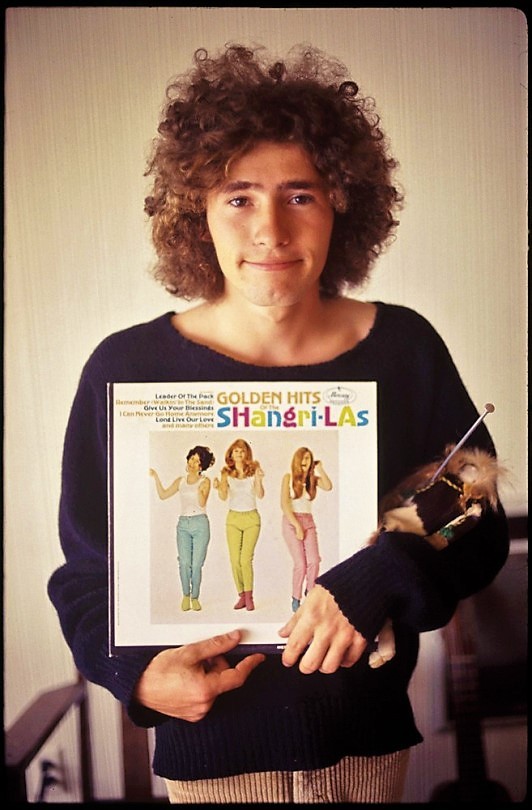
Tim Buckley poses with a vinyl of the 1960s pop group The Shangri-Las at his home on April 12, 1967 in Malibu, California. Photo by Ed Caraeff.
3 notes
·
View notes
Text
Blondie Box Set Review: Against The Odds: 1974-1982
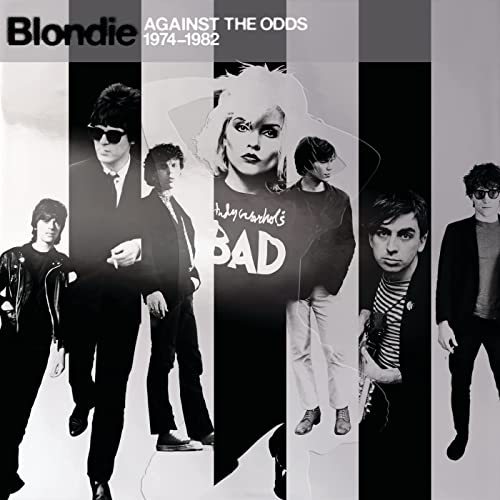
(UMe/Numero Group)
BY JORDAN MAINZER
At one point on Against The Odds: 1974-1982, the new Blondie compilation endorsed by the band itself, New York’s coolest cover a song by an L.A. band considered, in some circles, extremely uncool. It’s funny to hear the janky piano line from The Doors’ “Moonlight Drive” coming from a band containing the likes of Debbie Harry, Chris Stein, and Clem Burke, but considering the ramshackle nature of much of the new box set, it’s more fitting than you might initially think. (Okay, minus lacking Jim Morrison levels of pomposity.) Apart from remasters of Blondie’s first six studio albums, Against The Odds contains 52 session outtakes, demos, and B-sides, the majority of which were previously unreleased, and they show Blondie’s wide array of influences and their journey as a band. The set is essential listening for not just those unfamiliar with Blondie, but those who are familiar and have made their minds up based solely on the hits.
Against The Odds lays itself bare from the get-go. That is, if most box sets end with the greenest of demos catered to completist collectors after presenting the goodies, Against The Odds presents the projects in progress first, as is, necessary to understanding Blondie. It begins with a song that’s not even Blondie’s, a cover of the Shangri-Las’ “Out In The Streets” not released until 1994 on The Platinum Collection, with tremolo guitars from Stein, wiry bass from then-member Gary Valentine, and punky drum fills from Burke. "Out In The Streets” sets the stage for a bevy of shambling songs inspired by girl groups, doo wop, and surf rock, 50′s and 60′s music that on paper is the farthest cry from the sleek, synth-heavy new wave band that fills oldies radio stations today. Limber percussion drives “X-Offender” and “In The Sun”--Harry even shouts, “Surf’s up!” at the beginning of the latter--while handclaps and warbling keyboards buoy the swaying “Little Girl Lies” and “In The Flesh”. Richard Gottehrer, who spent the 60′s co-writing hits like The Angels’ “My Boyfriend’s Back”, produced Blondie’s 1976 self-titled debut and acted as a link between the eras of music, perhaps disparate in instrumentation but connected in lovelorn melancholy.
Against The Odds’ boldest moves center around Blondie’s best-known and most beloved song. “Heart of Glass” is a masterclass of disco, the perfect mix of live drums and drum machine, funky guitars and synths, and shimmery vocals from Harry. The incomplete versions presented here are notably inferior. “The Disco Song”, whose repeated verse is, “Once I had a love and it was a gas / Soon turned out to be a pain in the ass” almost seems like a joke, even with Harry’s incredible vocal control in her wailing. The band’s performance on Alan Betrock’s demo of “Once I Had A Love” is as sterile and jangly as the eventual version is smooth and sexy. Stein’s mix presented later on the album features the song’s recognizable panning percussion that worms its way into your ears from the get-go and echoing guitar plucks up and down the scale, but the isolation of those aspects knowing the final product is frustratingly toying to listen to. By the time the box set gets to the demos for eventual Parallel Lines producer Mike Chapman, the song is closer to the current version, and hearing the craft along the way only makes you appreciate anew a song you’ve heard a million times.
That those in the new wave scene of the 70′s accused Blondie of “selling out” by making a pure disco song in “Heart of Glass” is obviously utterly ridiculous to modern ears. Against The Odds shows a band that was unafraid, in the face of their peers’ purity, to incorporate elements of LGBTQ and Black music in their sound. They were known to cover “Lady Marmalade” and Donna Summer’s “I Feel Love” at their shows, and “Spaghetti Song” is a propulsive, Summer-esque jam (basically “Atomic”) that graces the Eat to the Beat outtakes on here. Early on, the band burned through a funk-punk version of Ike & Tina Turner’s “Sexy Ida”. Later, they’d embrace reggae and rap, as evidenced by (an admittedly messy version of) “Die Young Stay Pretty” and their cover of The Paragons’ “The Tide Is High”, one of their biggest hits. The demo of the latter on Against The Odds is stunning, leaning heavier into reggae-inspired percussion than the eventual version and featuring lush strings from Walter Steding.
And then there’s “Rapture”, purportedly the first number one single in the US to feature rapped vocals. Harry would be the first to tell you that said rapped vocals would have been better from the referenced Brooklyn MC Fab 5 Freddy (Fred Braithwaite) than from herself, but the song is nonetheless a high point in Blondie’s oeuvre, an inspired marriage of funk, new wave, disco, and rap. The disco version of “Rapture” included on Against The Odds sports tremendous cowbell and saxophone in the coda, while the original version “Yuletide Throwdown”, with vocals from Harry and Braithwaite added on later, eventually turns into a simmering krautrock jam with rippling synthesizers. That these two versions end so differently and both succeed speaks to the compositional and instrumental prowess of a band that only a few years prior was quite raw.
Ultimately, whether their bassy demos with Giorgio Moroder (“Live It Up”, “Angels On The Balcony”), soaring tunes for film soundtracks (“Call Me”, “Union City Blue”), or motorik home tape recordings (“War Child”, a “Ring of Fire” cover), at the center of all of Blondie’s collaborations and deep dives is a try anything spirit, a sort of punk exploration. We should be so lucky that their inquiring minds were documented. We should be even luckier they chose to reveal their work step by step.
youtube
#album review#blondie#ume#against the odds: 1974-1982#numero group#universal music enterprises#universal music group#the doors#debbie harry#chris stein#clem burke#jim morrison#against the odds#shangri-las#the platinum collection#the shangri-las#gary valentine#richard gottehrer#the angels#alan betrock#parallel lines#mike chapman#donna summer#eat to the beat#ike & tina turner#ike turner#tina turner#the paragons#walter steding#fab 5 freddy
11 notes
·
View notes
Text
Dick Clark 20 Years Of Rock N’ Roll (1973)





Contains 20 Original Hits Electronically reproduced for Stereo
Gatefold; includes 24 page "Yearbook" and the pictured flexi-disc, "Inside Stories," containing Dick Clark's recount of 'first time' broadcast appearances by artists on his show over the years.
Buddha Records
#my vinyl playlist#dave clark#crew cuts#bill haley#carl perkins#johnny cash#fats domino#jerry lee lewis#duane eddy#the everly brothers#paul anka#frankie avalon#brenda lee#dion#the shirelles#joey dee#the kingsmen#shangri-las#sam the sham & the pharohs#righteous brothers#the lovin' spoonful#the young rascals#van morrison#otis redding#tommy james#edwin hawkins#curtis mayfield#al green#oldies#rock n roll
8 notes
·
View notes
Video
youtube
UK Chart Hits - 1972
Shangri-Las - Leader of the Pack
(14 weeks in chart peaking at No. 3)
2 notes
·
View notes
Text
today, my number of visits to the burnt city becomes greater than my number of visits to the drowned man, and i'm not sure how i feel about that. grateful, of course, that i have seen both shows as much as i have. happy that pd is back in my life and i still have so many more visits stretching ahead of me. but mostly just wistful that, while this cool new show continues, the most important theatrical experience of my life is just so aggressively in the past with zero possibility of ever revisiting
i guess it's true what the lady sang
youtube
#the burnt city#burnt city#punchdrunk#punchdrunk theatre#immersive theatre#immersive#troy#mycenae#the drowned man#drowned man#Youtube#the shangri-las#shangri-las#you can never go home anymore#or back to that former sorting office in paddington
4 notes
·
View notes
Text
Iconic Shangri-Las Lead Singer Mary Weiss Passes Away at 75
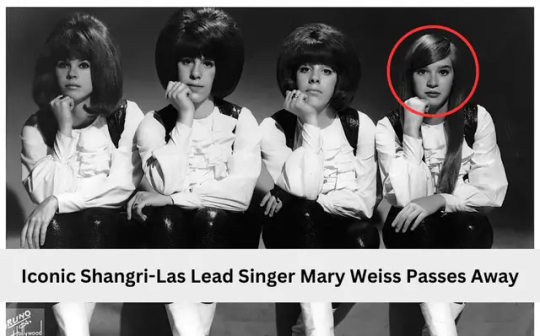
In a somber note, the music world bids farewell to Mary Weiss, the distinctive voice behind the iconic 1960s girl group, the Shangri-Las.
The Shangri-Las' Journey
Hailing from Queens, New York, the Shangri-Las gained popularity with hits like "Remember (Walking in the Sand)," a Billboard top 5 chartbuster in 1964.
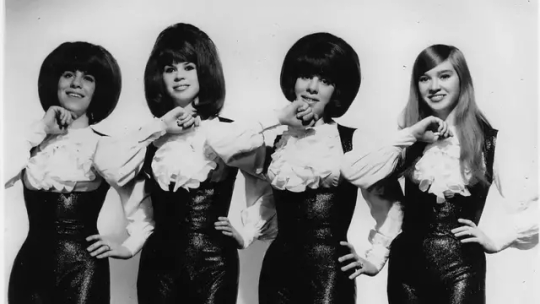
"Leader of the Pack"
The pinnacle of their success came with "Leader of the Pack," the top Billboard single of 1965. Co-written by George Morton, the song showcased Weiss's emotive vocals.

Life After the Shangri-Las
Post-disbandment, Mary Weiss took a hiatus from the music scene, moving to San Francisco and working in architecture. After four decades, she made a solo comeback with the 2007 album "Dangerous Game," providing a mature perspective on the Shangri-Las' signature sound.
Reflections on Youth and Grown-Up Wisdom
In a 2007 interview, Weiss reflected on the challenges faced by female artists in the industry. She emphasized the shift from being perceived as products to recognized artists.
Conclusion
Mary Weiss's legacy endures through the timeless music of the Shangri-Las. As we mourn her passing, we celebrate a life well-lived and a voice that will resonate through generations.
In Memoriam: Mary Weiss (1948-2024)
Read the full article
#1960spop#BillboardTop5#GeorgeMorton#LeaderofthePack#MaryWeiss#Remember(WalkingintheSand)#Shangri-Las
0 notes
Text
In Memoriam: Mary Weiss (1948 - 2024)
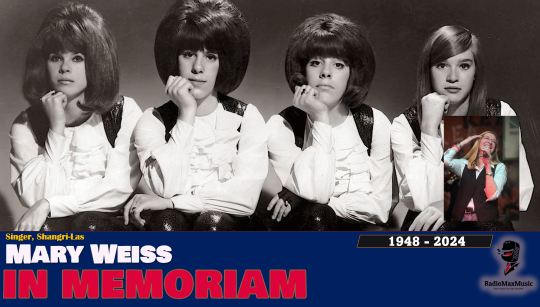
View On WordPress
0 notes
Text
Lead Singer of 1960s Girl Group The Shangri-Las Dies at 75
:'(
0 notes
Text
0 notes
Text

Anyone watching Shangri-la Frontier?
#shangri la frontier#onlyf@nz#18+ account#18+ content#spicy accountant#spicy pics#spicy site#i sell custom content#sexy titts#sexy content#onlytease
402 notes
·
View notes